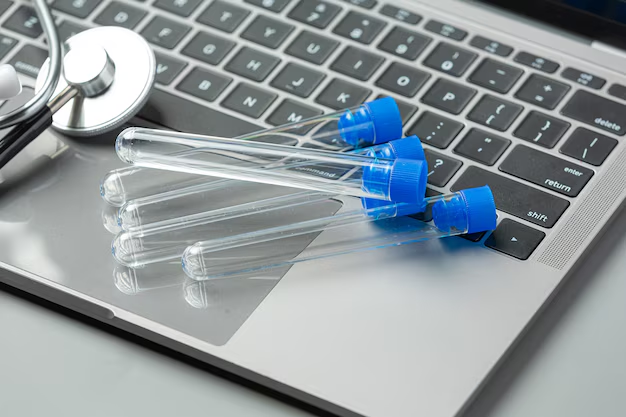Understanding the Shelf Life of Refrigerated Urine Samples
Have you ever found yourself wondering how long a urine sample is viable for testing when stored in the refrigerator? While it might seem like a niche topic, understanding urine storage is crucial, especially for those involved in medical testing, research, or personal health monitoring. Let’s dive into the specifics of urine storage, its shelf life, and related considerations to ensure the integrity of your sample remains intact.
🧐 Why Urine Storage Matters
Urine is commonly used in medical diagnostics because it contains a wealth of information about an individual's health. Proper storage is essential to maintain the sample's integrity, preventing the degradation of substances and ensuring accurate diagnostic results. Whether it's for routine health checks, drug testing, or medical research, understanding urine storage can make a significant difference.
How Long Can Urine Be Refrigerated?
🌡️ Ideal Storage Conditions
Refrigeration is a common method to prolong the life of a urine sample by slowing down bacterial growth and chemical reactions. Typically, a urine sample is considered acceptable for testing if stored in the refrigerator for up to 24 to 48 hours. Beyond this timeframe, there is an increased risk of chemical changes and bacterial overgrowth, which can alter test results.
Factors Affecting Urine Shelf Life
Temperature: A typical refrigerator temperature of 4°C (39°F) is suitable. Temps significantly higher or lower can affect urine stability.
Contamination: Avoiding contamination during sample collection is crucial. Ensure containers are clean and sterile.
Container Type: Use an airtight, sterile container to prevent contamination and evaporation.
Exposure to Light: Store the container in an opaque or covered setting to minimize the breakdown of sensitive compounds.
pH Changes: Even in refrigeration, pH might slowly change, impacting certain test results.
📝 Practical Steps for Storing Urine
📋 Collection Tips
Ensure the collected urine is a midstream sample and use a clean, dry, and sterile container. This helps reduce contamination and ensures higher accuracy in results.
🧊 Refrigeration Process
- Label: Clearly label the sample with your name and the date and time of collection.
- Seal: Ensure the lid is tightly sealed to prevent leaks and contamination.
- Store Promptly: Place the sample in the refrigerator as soon as possible to preserve its condition.
👨🔬 Testing and Timing
Whenever possible, deliver the sample for testing within the 24 to 48-hour window. If delay is unavoidable, communicate with your healthcare provider or the testing facility about any potential issues.
🧪 Testing and Analytical Considerations
Impact of Delayed Testing
Delayed testing can lead to the breakdown of crucial biomarkers, resulting in inaccurate diagnostics. Bacterial growth can consume glucose and alter other components, skewing results for conditions like diabetes or infections.
Common Urinalysis
A standard urinalysis includes checks for protein levels, glucose, ketones, blood, and specific gravity. The stability of these components can be compromised if the urine is not stored correctly or tested in time, affecting the reliability of the test.
Thinking Beyond Refrigeration
🔬 Preservation Methods
When longer storage is needed, look into alternative methods:
Chemical Stabilizers: These are sometimes added to samples intended for extended storage periods. Consult professionals for safe usage.
Freezing: In some cases, freezing samples may be feasible. However, be aware that not all tests can use frozen samples, as thawing may damage cell structures or change the sample's composition.
🤔 When to Consider Other Options
Refrigeration may not suffice in all cases. Here are scenarios when alternatives might be necessary:
Extended Research Studies: For research extending weeks or months, immediately seek guidance on appropriate preservatives or storage techniques.
Remote Collection: If access to a lab is delayed, discuss preservation options with professionals to prevent sample degradation.
🚀 Quick Reference Table: Urine Storage Tips
Essential Tips for Storing Urine Samples in the Refrigerator
| Action | Details |
|---|---|
| 👩🔬 Collection | Use a clean, midstream sample in sterile conditions. |
| 🚀 Labeling | Clearly indicate name, date, and time on the container. |
| ⏰ Timing | Aim for testing within a 24 to 48-hour window. |
| 🔒 Seal | Use airtight containers to prevent leakage or contamination. |
| 🌡️ Temperature | Maintain a constant refrigerator temperature (around 4°C or 39°F). |
| 💡 Avoid Light | Store samples in an opaque place to prevent photodegradation. |
| 🧊 Alternates | Consider preservatives and freezing for long-term storage needs. |
Ensuring Reliable Results
It's clear that understanding how long urine is good for in the refrigerator is vital for accurate and reliable test outcomes. Correct storage practices minimize degradation risks and support the integrity of the results. Whether for personal health monitoring or research, ensuring proper urine sample care is a small yet vital step toward achieving dependable diagnostics.
In summary, while refrigerating a urine sample provides a short-term storage solution, timing and conditions can heavily impact its viability for testing. By following best practices and staying informed, you ensure your efforts lead to accurate, actionable results.
